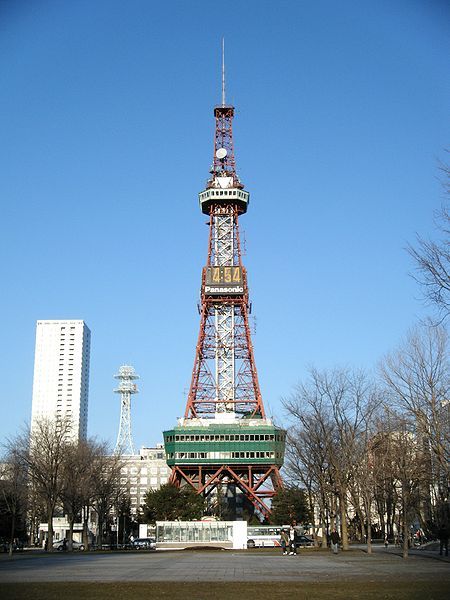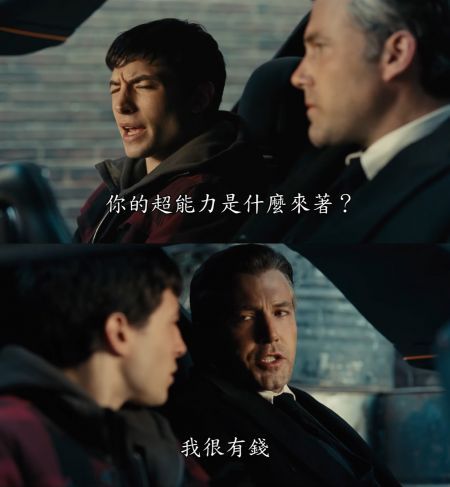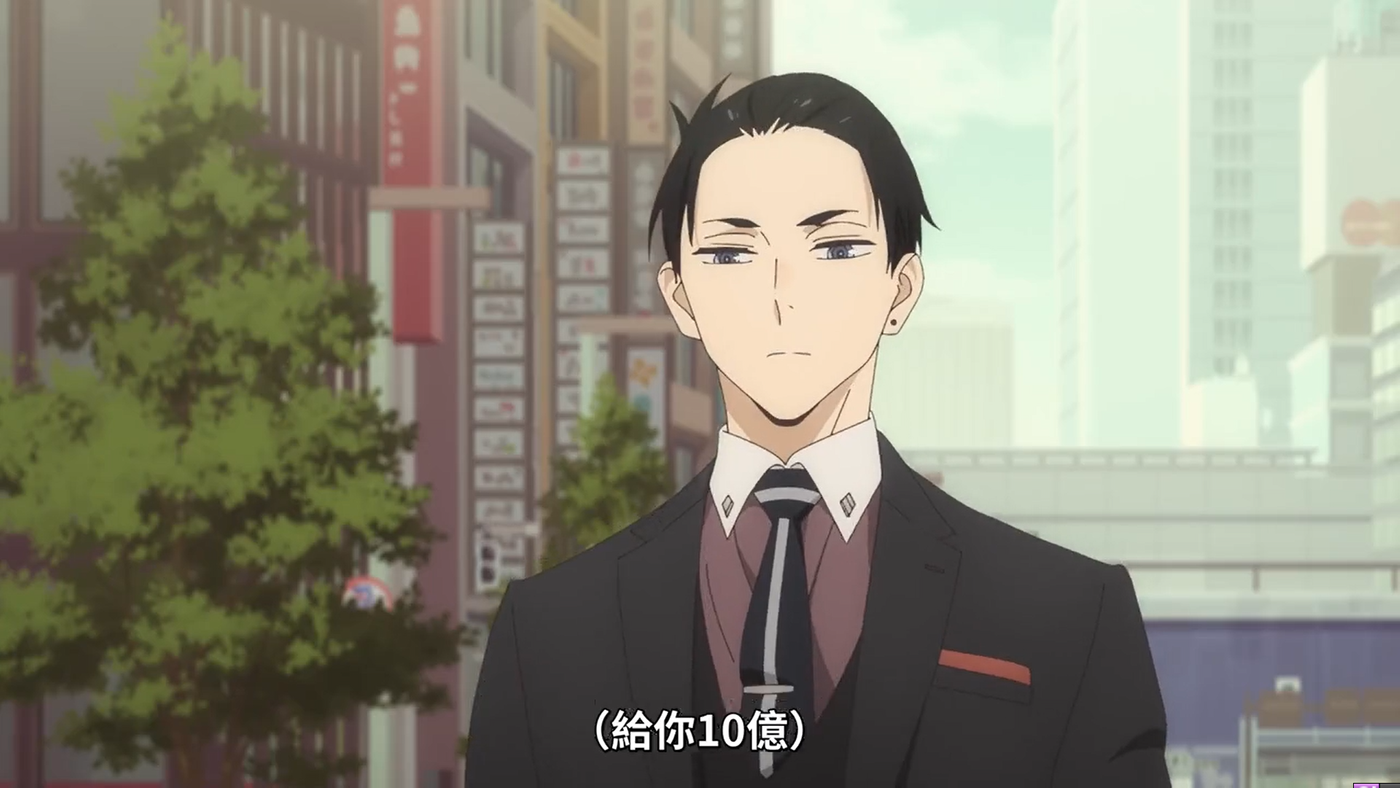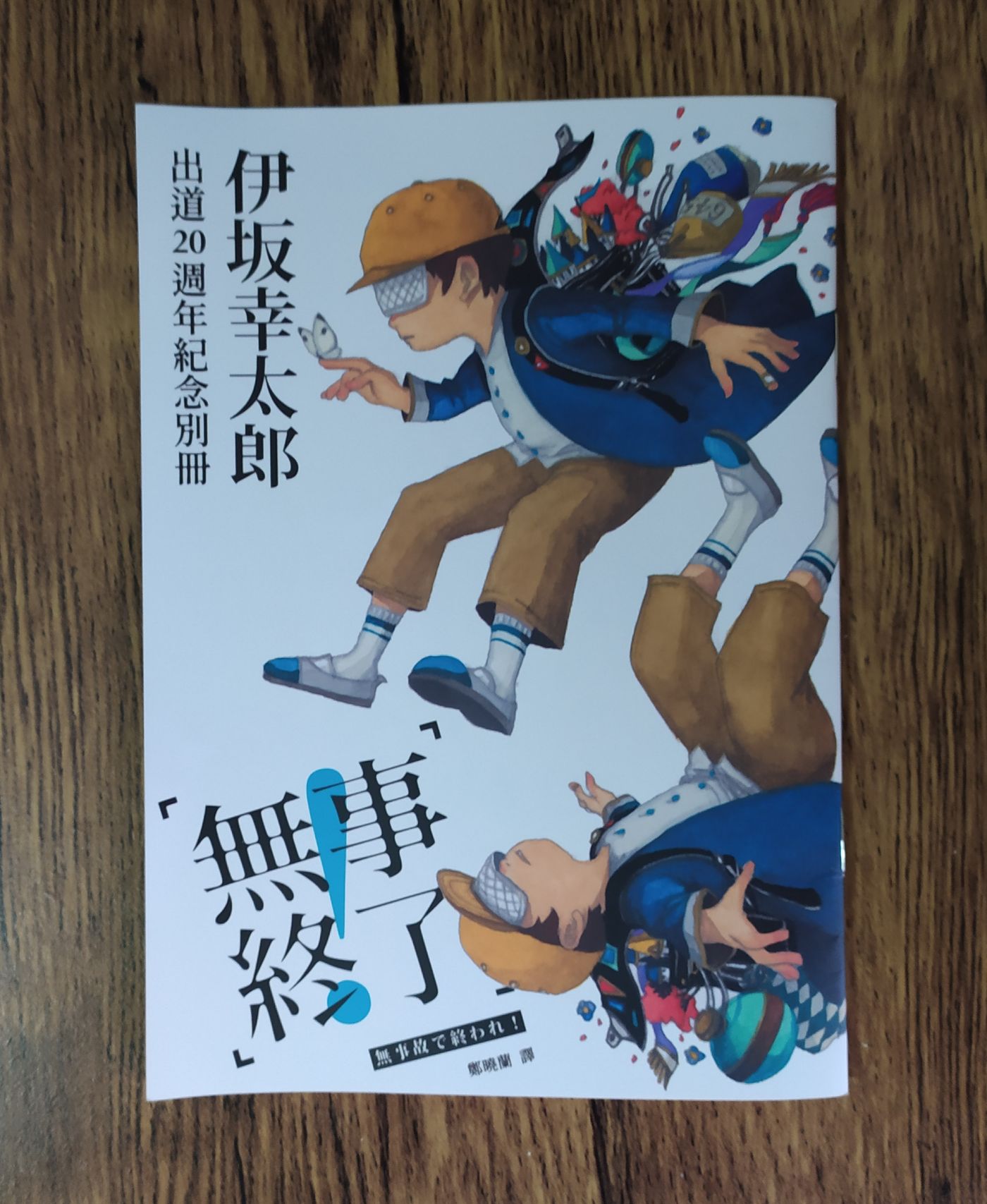A love story between two boys? Interpretation of Isaka Kotaro's "Nothing to Do" (Part 1)
A few days ago (while writing this article), I saw that @qiqi recommended Kotaro Isaka's " Anti-Socrates ", so I decided to take this book out of my bookcase for three weeks and read it. But I really couldn't finish it so quickly, but I was attracted by the special commemorative book attached to the book. It was actually very interesting to discover this story, so I planned to analyze this short story " The End of Nothing ".

This article is the first one, explaining the first and middle parts of the story, and the next one will be published at the same time tomorrow, explaining the latter part of the story. The text in italics is the original story. Because the interpretation is based on the story line, if you want to experience the full story, it is best to buy a book to read. Here are the paragraphs for reference:
- 📕Story Introduction
- 🗼Front, accident-free tower
- 🧒👦The middle section, the friendship story of two boys
- 📌After watching, first foreshadow, then echo.
📕Story Introduction
" The End of Nothing " tells the protagonist Nakano, because one day he saw a tall tower on the TV news screen. When he recalled his childhood, he called it the " No Accident Tower ", and then he recalled the memory of his elementary school and what happened with his friends. Interesting story of...
This story is a special volume commemorating the 20th anniversary of Isaka Kotaro's debut , which is included in the main book " Anti-Socrates ". The interesting thing about this commemorative album is that the middle and back paragraphs of the story are written in the form of double-line stories , but the two paragraphs are not directly related. Even so, this way of writing is very free to read. You have to read either paragraph A or B first, or only one paragraph, or both.
I personally recommend reading both paragraphs, so that you can see the many details in it, and you can read which paragraph first. Then the following content will explain this story in detail, it will completely involve the plot and full spoilers, please watch it carefully.
🗼Front, accident-free tower
When I was in elementary school, we called it the "Accident-Free Tower".

The story begins with the protagonist Nakano and his wife having a conversation. Because I saw the news screen, the " accident-free tower " that I was very impressed with was playing, so I discussed its meaning with my wife: the name of the accident-free tower comes from the fact that the creator of the first generation building died in a traffic accident, and the second generation It was built so that there would be no more accidents, and the number of traffic accidents and fatalities today is displayed every day.
"Have you ever heard of the Dahua innovation of "no (six) things (four), so (five), and a smooth ending"?"
"It's a homonym used to recite the year number."
That's right, Nakano then thought of an interesting anecdote about "no accident". The phrase " no accident, ended smoothly " refers to Japan's " Dahua Innovation " that began in 645 AD, because the pronunciation of " no accident " is similar to " 645 ". The relationship of similar pronunciation is often used as the student's recitation formula.
(I don't know if I made a mistake, but I don't actually read it like this? I don't think it's very similar.)
Continuing the above topic, for the convenience of the follow-up explanation, I have to first introduce this history in the story:
The " Dahua Reform " began in AD 654. At that time, Japan launched a series of social and political reforms in order to abolish the system of dictatorship of the aristocrats (families with great power), to consolidate the imperial power, and to imitate the system of the Tang Dynasty in China.

The " Otomi Incident " that also occurred in 645 was actually the beginning of the Dahua Revolution.
So what does the so-called Otomi change refer to? After the death of Japan's 31st emperor in 587, the "Soga clan" at that time saw this opportunity and took advantage of the issue of the succession to the throne, and successfully took control of the government. And those in power were passed on from generation to generation, until the "bumin" who were under control became unhappy at that time, coupled with the influence of the feudal system of the Sui and Tang Dynasties, and finally caused the "eldest brother and prince of the middle" and the aristocrat "Zhongchen Jianzu" to launch a coup. The goal was to assassinate the ruler at the time, "Su Wo Rinlu".
Then back to the content of the story, Nakano has a lot of opinions on this " no accident and smooth ending ":
"The so-called 'Dahua Renovation' refers to the political reform that began after the eldest brother, the prince, and the middle minister, Kazuma, assassinated Su Wu Lulu. So strictly speaking, it seems impossible to say that 'Dahua Renovation is equal to 645'. .
Although the year 645 can be regarded as a great innovation, strictly speaking, it is indeed "opening", not "ending". What really happened in 645, it should be said that the Otomi change is the most accurate . Of course, this is just a recitation of formulas, and understanding is not so accurate.
Even disregarding this point, at least 1964-5 was a year in which reforms "launched", not "closed". As a result, he actually said "no accident, the curtain ended smoothly". In the end, he had already been assassinated long ago, and it's not just "no accident". "
The reason I'm going to pick this out in particular is because Nakano's view of "no accident and a smooth ending" is a very important part of this story. As I just said, the Dahua innovation started with the Otomi change, which means that it did not end without incident, but it was the complete opposite, which is ironic.
In this way, the name of the "No Accident Tower" is also the same. After the accident has already happened, it continues to say "No accident".
In the following paragraphs, the author uses the dialogue to explain to us that Nakano is a physician, but this is just a foreshadowing, let us continue to read.
Because of the TV news, Nakano then recalled the story that happened with " Fujiwara " when he was in elementary school.
🧒👦The middle section, the friendship story of two boys
The story takes place in the fifth grade of Nakano Elementary School:
"If you have any difficulties, you can tell me."
Nakano and Fujiwara said so. Although Nakano himself is not good at communication, considering that Fujiwara was here on the first day of transfer, he spoke for the same reason.
"If I were him, I wouldn't feel safe coming to this completely unfamiliar school."
From this, it can be seen that Nakano is definitely a warm man~~~

On the first day of the transfer, because Dahua was innovating in the history class, the teacher made a joke:
"Nakano sits next to Fujiwara. Nakatomino kamatari later changed his name to Fujiwarano kamatari, so it's a duo of Nakano and Fujiwarn."
The teacher's words are telling the story of the change of Otomi. At that time, the nobleman "Nakasama Kazuma" was later renamed "Fujiwara Kazuma", so it is said that Nakano and Fujiwara are a duo. And then Fujiwara said:
"If there is Su I here, I will feel embarrassed, so don't talk about it." The whole class suddenly boiled.
Because Su I was the target that Zhong Chen Kazuo wanted to assassinate, Fujiwara made this joke. The same as the "no accident and smooth ending" in the previous paragraph, this is also a foreshadowing.
Although Nakano and Fujiwara were not familiar with each other at first, they often went home together after class because they shared the same way home. And they often call the tall building in front of the station " the accident-free tower ", and call it " our holy place " (because of the relationship between the Dahua innovation duo).
When I was in Primary Six, the accident-free tower came to the "70th anniversary" and originally agreed to participate together, but was unable to participate because of the new virus. Here I think the author wrote two very interesting words to pave the way for the follow-up:
It feels like we don't even have the energy to even think about something "unfortunately going, sorry".
"If I want to live now, I'm exhausted." But I didn't care what this sentence meant at the time.
On the eve of graduation, they just came across the topic of the essay "Dreams in the Future". Fujiwara didn't know what to do, so he decided to use the ghost footnotes to make a choice. And Nakano decided to work hard to become a doctor because his father and grandfather were both doctors.
If you remember, in the early part of the story, it was stated that Nakano was a physician, that is, Nakano had indeed fulfilled his dream! But is this a dream, or is it just a profound influence from his father and grandfather?
The " ghost footnote " in the story, also known as the ghost foot map or the Amitabha sign (in Japanese), is a very simple decision-making tool.

The above picture is a schematic diagram of the ghost footnote, there are horizontal and straight drawing methods. The drawing method is to draw equal parallel lines according to the number of tokens you want to draw, and then draw any horizontal line between the parallel lines, one side as the starting point and the other as the ending point.
Then choose one of the starting points of the parallel line, go forward along the line, and turn when you encounter a horizontal line, which will eventually correspond to the drawn sign.
Fujiwara wrote "teacher, football player, pizza chef, superhero, office worker", and added a "doctor" by the way. Nakano also asked about the definition of superhero, is it like Superman or Spiderman? And Fujiwara replied:
"Speaking of which, it should be like Batman or Iron Man. It feels real to build weapons yourself without superpowers, don't you think?"
You are right, Fujiwara, of course you don't have to rely on superpowers, you have to rely on "money power".


I randomly added a few horizontal lines and said, "Okay, choose." Then I put the note towards him.
Fujiwara said, "Are there ghost footnotes abroad?" and put his finger on the paper. At this moment, a white-pink butterfly from nowhere flew close.
The two people who finished drawing the ghost footnotes were just about to start when they were interrupted by a white pink butterfly.

📌After watching, first foreshadow, then echo.
The first part of the story revolves around the story behind the phrase "no accident and a smooth ending ", such as "Dahua Innovation", "Otomi's Change"; Point, they are called after the accident .
In the middle of the story, the author quietly merges the two stories. The plot that was originally only regarded as "information", after seeing the story of Nakano and Fujiwara, I had a feeling of "as it is", but I didn't expect such a big connection.
After reading the first paragraph, I can already have a little understanding of the information and settings in the story. When I see the childhood stories of Nakano and Fujiwara, I can be more immersive and understand the plot of the story.
I think the stories in the first and middle sections are not bad, but they are not yet full marks. I want to watch the plots of the latter sections, or watch the whole story together, in order to appreciate the power of it.
Final note: The picture of the tower used at the beginning of the article is " Sapporo TV Tower ", but I simply think there is a TV, and it sounds like "Accident-Free Tower". As for which tower the author refers to, I don't know.
The next chapter will be released at the same time tomorrow, explaining the most exciting second part of the story, "A and B Double Story". What will happen to Nakano and Fujiwara?
Like my work? Don't forget to support and clap, let me know that you are with me on the road of creation. Keep this enthusiasm together!


- Author
- More